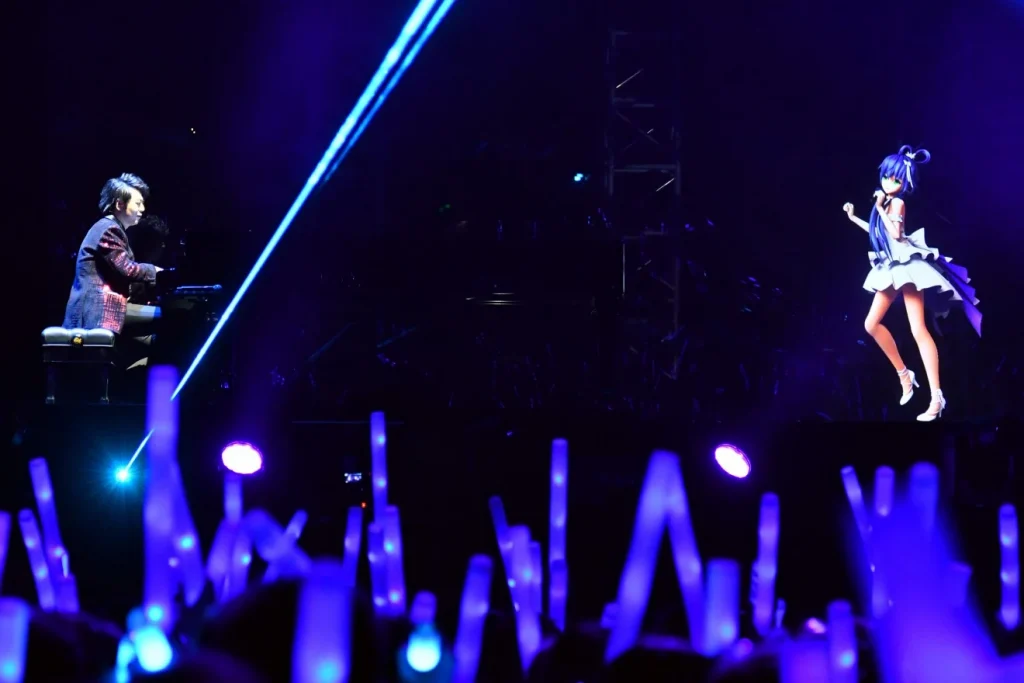
In recent years, digital technologies have enabled a blending of the real and imaginary within the broader event sector. Such events have blurred the lines between art, leisure, information, and entertainment, offered in an expanding array of multimedia spectacles. These advancements have enhanced visual presentations, incorporating programming, lighting, projections, special effects, and holograms to create seamless combinations of reality and fantasy. The rise of holographic companies in stage design has allowed audiences to experience performances by deceased musicians such as Tupac Shakur, Maria Callas, Roy Orbison, Teresa Teng, and Whitney Houston. Digital holography has also paved the way for virtual pop stars, including Hatsune Miku from Japan and Luo Tianyi from China. These characters are products of a blend of voice software, idol industry frameworks, and fan-driven creativity, enabling entirely new forms of entertainment and audience engagement.



Like digital technologies, social media and smartphones are deeply embedded in the environments and material circumstances through which we experience, interpret the world, and connect with others. Rather than external forces acting on us, such tools are integral to our daily lives. Platforms–the systems, processes, and relationships they encompass–have also become increasingly significant in shaping, mediating, and expanding our understanding and experience of popular music. The rise of digital platforms, streaming services, and social media requires a rethinking of the economies and industries of popular music, along with the evolving dynamics between recorded and live music. This is particularly relevant in the context of live performances, where digital technology has played a significant role during a period when live events gained increasing commodity value within the “experience economy”, especially as concert ticket prices skyrocketed and the cost of recorded music formats fell.
This according to “Stages, platforms, streams: The economies and industries of live music after digitalization” by Zhang Qian and Keith Negus (Popular music and society 44/5 [2021] 539–557; RILM Abstracts of Music Literature, 2021-17913).
Below, watch a Maria Callas hologram performance, backed by a live symphony orchestra and a video of a Teresa Teng hologram performance with Jay Chou.


